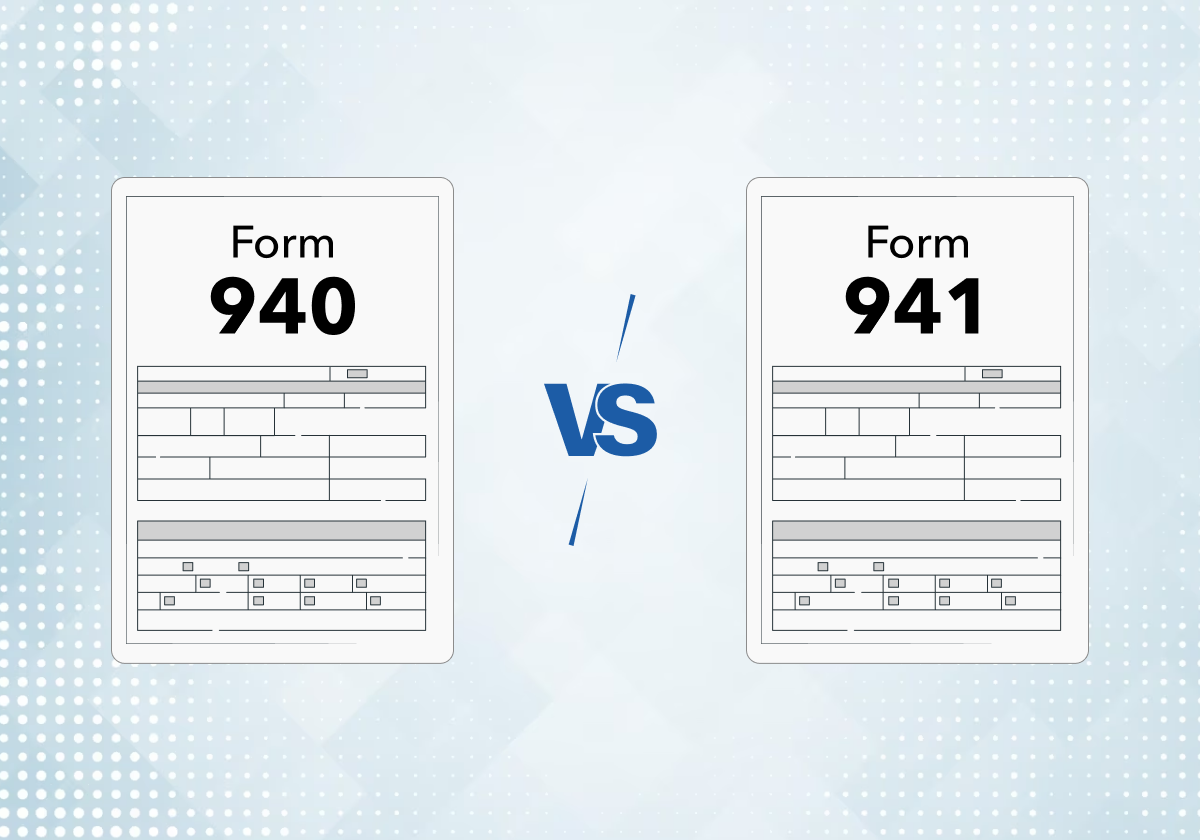When you manage a business with employees, navigating and fulfilling various tax requirements is particularly essential. Two important tax forms to understand for reporting employee wages and deposited taxes with the IRS are Form 941 and Form 940. To help you identify the distinctions between both forms, this guide covers the differences between Forms 941 and 940, examining their purposes, distinct filing criteria, and deadlines.
Tax1099 is accepting Form 941 for the fourth quarter of the tax year 2023.
What is Form 940?
The 940 Form is an IRS annual tax return used by employers to pay and report FUTA taxes. The Federal Unemployment Tax Act (FUTA) is a federal law that funds support for individuals actively seeking employment but are currently unemployed.
FUTA taxes only apply to the first $7,000 of each employee’s wages in a calendar year. This means that if an employee earns $10,000 in a year, you will only need to calculate the FUTA tax on the first $7,000. Any wages beyond this threshold are FUTA-exempt.
It’s important to note that certain payments are excluded from the calculation of the $7,000 wage threshold. This typically includes payments made under state unemployment compensation laws and any payments made to a retirement plan on behalf of an employee. These exclusions reduce the overall FUTA tax liability for employers.
What is Form 941?
941 Form is also called the Employer’s Quarterly Tax Form, used by employers to report the Federal income tax withheld, social security tax, and Medicare tax (FICA taxes) for the employee’s paycheck. This form is also used to calculate the employer’s share of Social Security and Medicare taxes.
Employers that pay wages that are subject to withholding must file Form 941 every quarter.
Key Difference between 940 and 941
The key differences between Form 940 and Form 941 are their purpose, filing frequency, and the employment taxes they pertain to:
| Feature | Form 940 | Form 941 |
| Purpose | Employer’s Annual Federal Unemployment Tax Return | Employer’s Quarterly Federal Tax Return |
| Filing Frequency | Annually | Quarterly |
| Reporting Period | Calendar Year | Calendar Quarter |
| Who Files | Employers who paid wages to employees and are subject to FUTA (Federal Unemployment Tax Act) | Employers who withhold federal income tax and FICA (Social Security and Medicare taxes) from employees’ wages |
| Content | Reports unemployment taxes paid by the employer during the year | Reports income tax withheld and both employer and employee portions of Social Security and Medicare taxes for the quarter |
| Filing Deadline | IRS eFile: January 31 of the following year IRS eFile(If Taxes are already paid): February 10 of the following year | Last day of the month following the end of the quarter (e.g., January 31st for the fourth quarter) |
| Late Filing Penalty | 5% per month, up to 25% of the unpaid tax | 5% per month, up to 25% of the unpaid tax |
1) Purpose
Form 940 (Employer’s Annual Federal Unemployment Tax Return)
This form serves the purpose of reporting and settling the federal unemployment tax (FUTA) liability. The funds collected contribute to supporting unemployment benefits for individuals who are no longer employed. Employers utilize Form 940 to compute and declare their yearly FUTA tax liability.
Form 941 (Employer’s Quarterly Federal Tax Return)
In contrast, Form 941 is employed for the reporting and payment of various employment taxes on a quarterly basis. This encompasses federal income tax withholding, Social Security tax, and Medicare tax, collectively referred to as payroll taxes.
2) Frequency of Filing
Form 940
Employers submit Form 940 on an annual basis, covering the entire calendar year. The usual deadline for filing is January 31st of the subsequent year, with an extended deadline of February 10th if all FUTA taxes have been deposited on time.
Form 941
Form 941 is a quarterly filing requirement, necessitating employers to submit it four times annually. The due dates for Form 941 align with the conclusion of each calendar quarter (e.g., May 1 for the first quarter, July 31st for the second quarter, October 31st for the third quarter, and January 31st for the fourth quarter).
3) Taxes Reported
Form 940
Form 940 is specifically designed for the federal unemployment tax (FUTA), which is not deducted from employees’ wages. Employers are responsible for calculating and paying the FUTA tax based on the wages they disburse to their employees.
Form 941
Form 941 is dedicated to reporting various payroll taxes, encompassing federal income tax withholding, Social Security tax, and Medicare tax. These taxes are withheld from employees’ wages and are concurrently matched and remitted by employers.
Electronically filed 941 and 940 forms are directly transmitted to the IRS from Tax1099.
Upon submitting your 941 or 940 filing to the IRS, you can expect to receive a prompt email updating you on the filing status on the same day. It’s important to be aware that the IRS does not accept the 941X, which is an amended version of the 941, through eFile. For the 941X, you’ll need to print the form and send it via mail.



